The Inca ruins of Pisac are scattered on a large and narrow ridge that descends into the Sacred Valley, terminating at the town of Pisac which is also from Inca times. Pisac is a royal estate founded by the first great Inca king, Patacuti. He also founded the royal estates of Ollantaytambo, Patallacta, Wiñay Wayna, and the big one — Machu Picchu. Although smaller than Machu Picchu, the Pisac ruins are extensive and considerably easier to travel to. It has terraces, temples, and views — a complete package. And it was spared from most of the destruction of the Spanish.
From Cusco, we started in Pisac and followed the Sacred Valley eventually all the way to Machu Picchu, stopping in Calca and Ollantaytambo en route.

We took an early taxi from Cusco to Pisac. Dropping off our luggage with the fine folks at the Pisac Inn (for a small fee), we then caught a second taxi to the top of the ruins. Our plan to visit the Pisac Inca ruins was to start at the top then follow the path all the way down the ridge, ending up back in town. That was the plan.
Qanchis Racay
Right past the parking area lies Qanchis Racay, a set of unremarkable buildings. Nothing fancy in layout of construction, this was most likely where the workers lived. Once past the Qanchis Racay, you come upon these wonderful terraces. In contrast the terraces we’d seen in Chinchero, these curve to match the terrain. And all along the hillside their lines sweep like sinuous topographic map contours sprung to life.
Qalla Q’asa
The next section, Qalla Q’asa, sits atop a hill. Qalla Q’asa, much like the Qanchis Racay, has mostly common masonry but with some more elaborate structures (double doorways, niches, etc.) The one thing it has over its neighbor, however, is a wonderful overlook of the Sacred Valley. Because of this strategic view, archaeologists say that this section housed soldiers. But this, like so much of knowledge about the Inca, is logical speculation.

There’s an area adjacent to Qalla Q’asa that I found as pretty as a garden. A stream comes down from a nearby mountain and continues down a narrow gorge. Before the gorge the Inca constructed terraces squared & straight on the slope leading down to a stream, like in Chinchero. Opposite the terraces stands a cliff, into which the Inca carved niches high up to serve as tombs for their mummified dead. And above the terraces sit four fountains, each with their own division as if to keep each one private. I found this garden area to be very lush, intimate, & charming.
From the garden area the path skirts around to the left of the Qalla Q’asa hill, and lead to the trapezoidal gate indicating an section of higher status. And indeed, this is the path that leads to the Main Temple section.
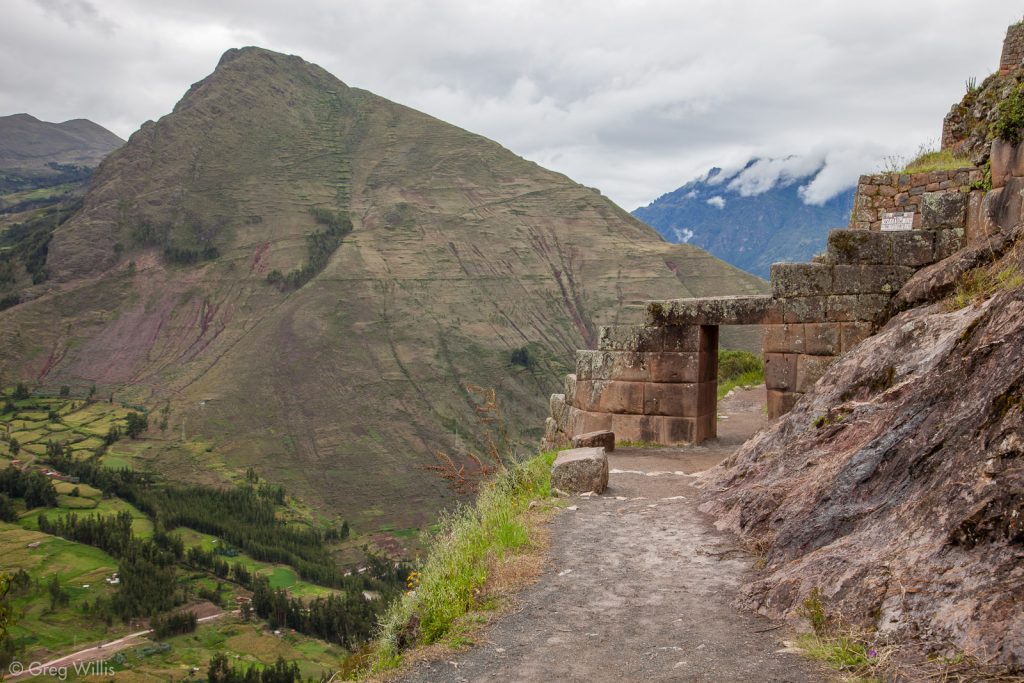
But heavy rains a few weeks earlier washed out the path. And also ended my clever plan of walking back down to the town. We retraced our steps to the upper parking area and discouragingly rode a taxi back to town.

So in town I came up with another plan. The plan was not clever nor imaginative in any way: walk up to see the rest of the ruins. So you might be thinking “What’s the big deal? Just walk.” Well friends, this is Peru and one can’t take a step without going up or down. The remainder of the ruins sat at 1,300 feet above the town. Reluctantly, we agreed to the new plan.
So up we went.
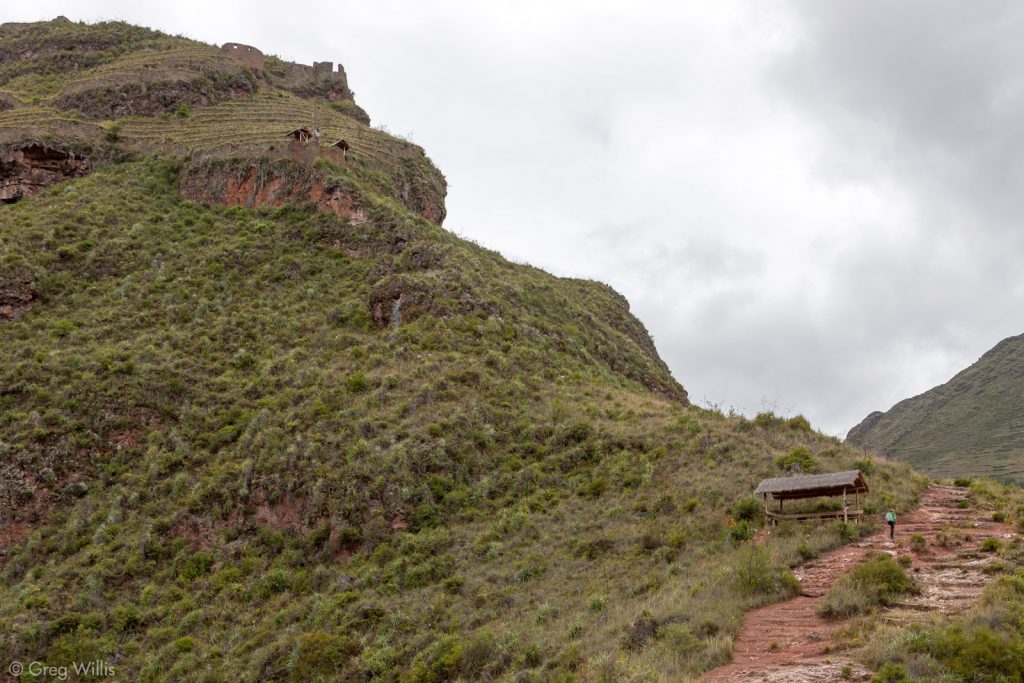
Up through terraces. Up through more terraces. Across a bridge, then up terraces. Next was a bit a ridge too rocky for terraces, which led to — wait for it — more terraces.
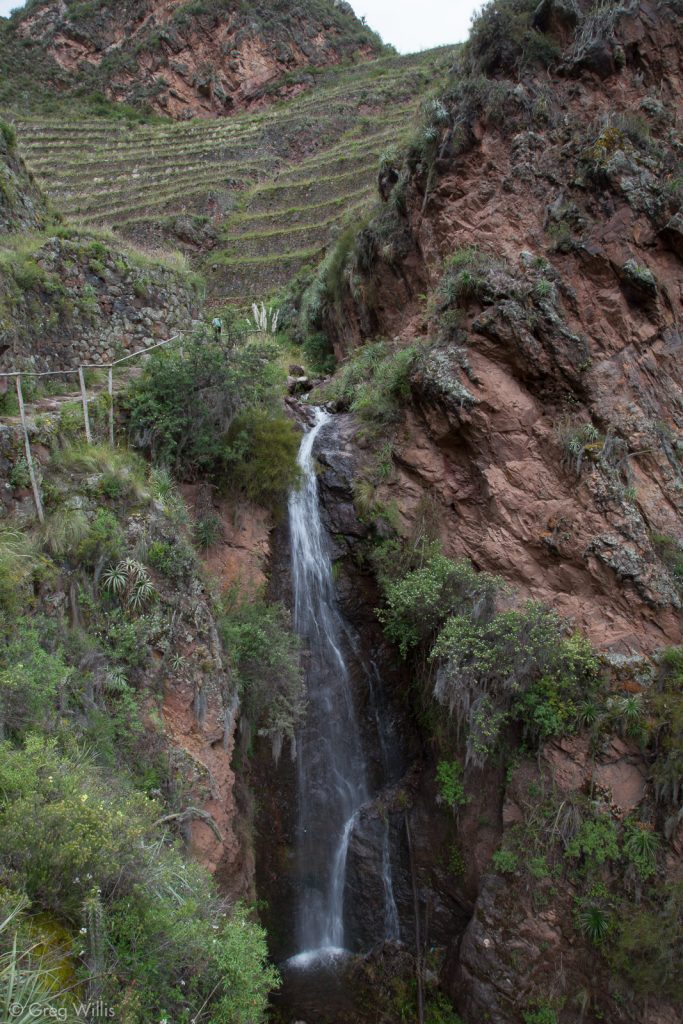
Waterfall in the Paccha Pata Terraces, Pisac 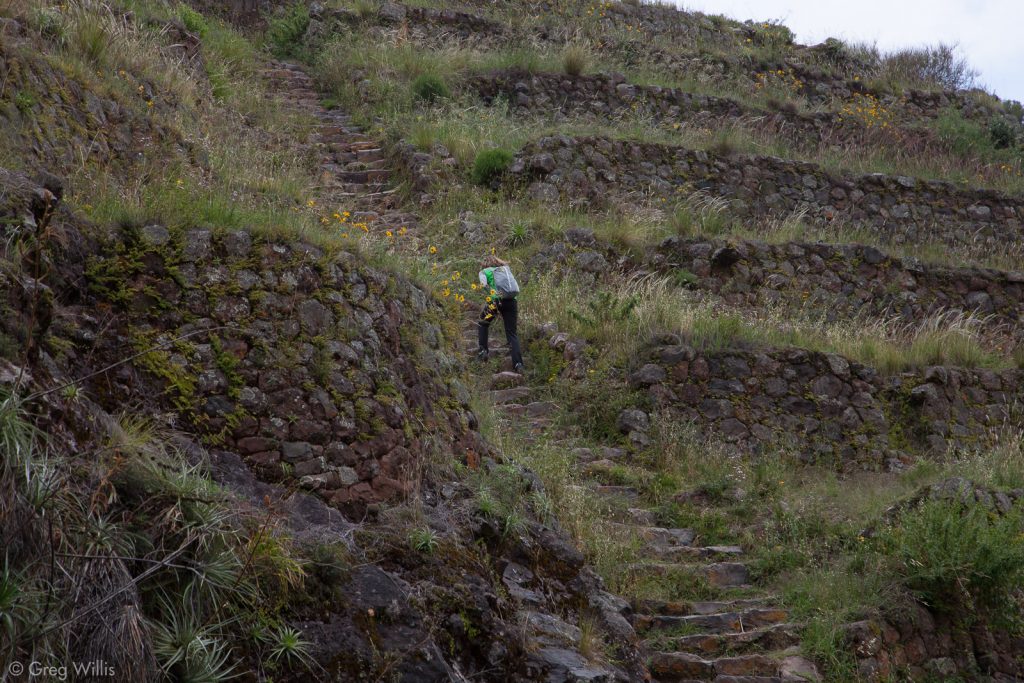
Walking up the Huimin section of Terraces, Pisac 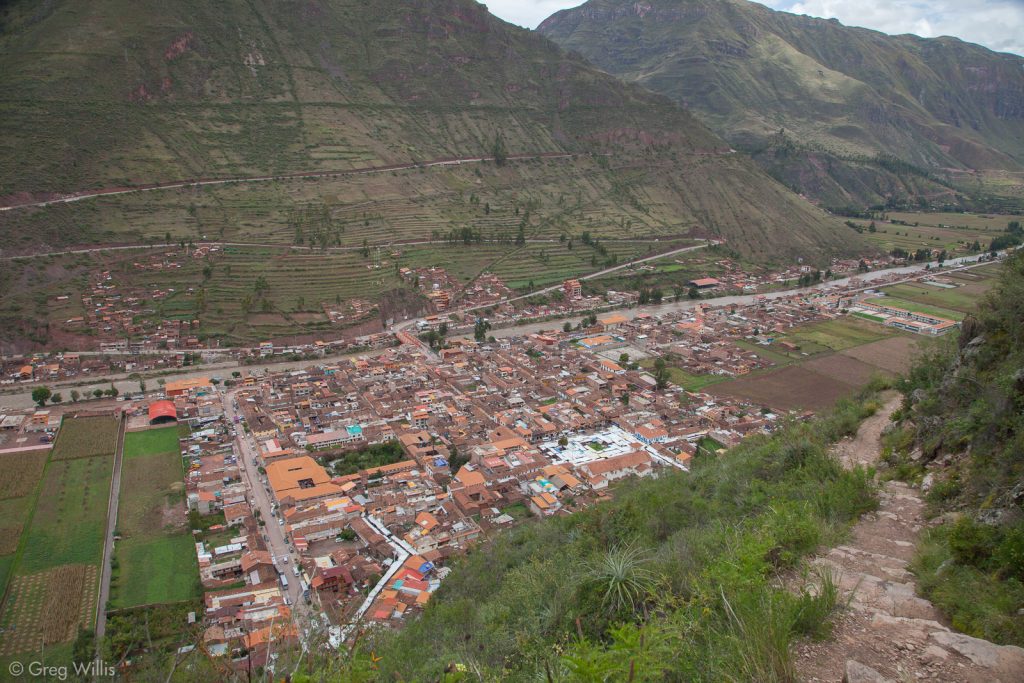
Pisac Town & the Urubamba River from the Trail 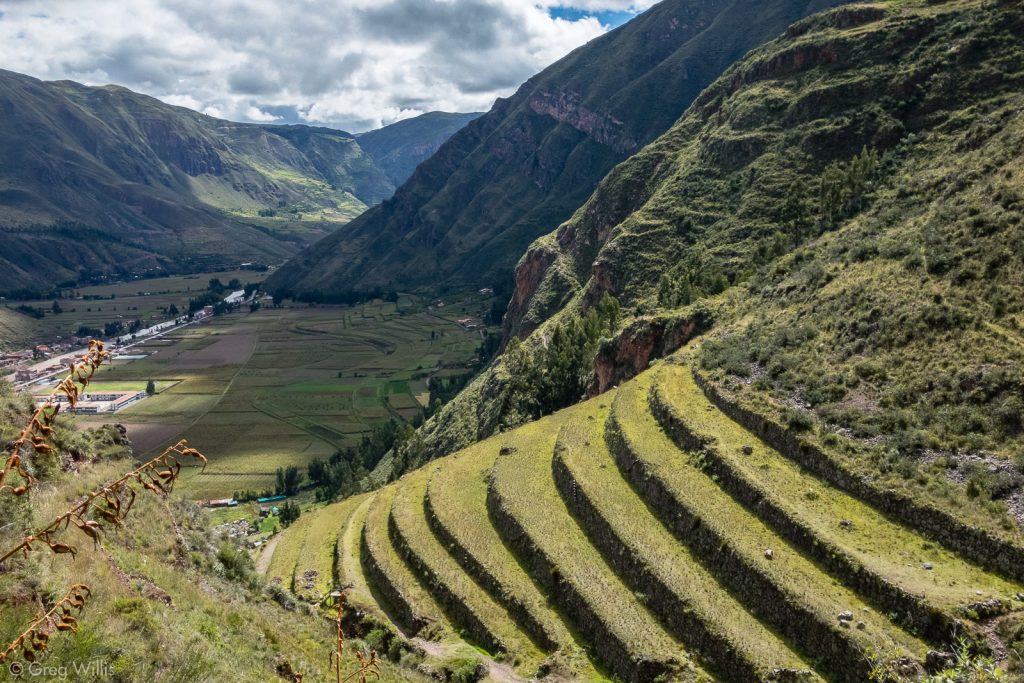
Paccha Pata Terraces and Sacred Valley, Pisac 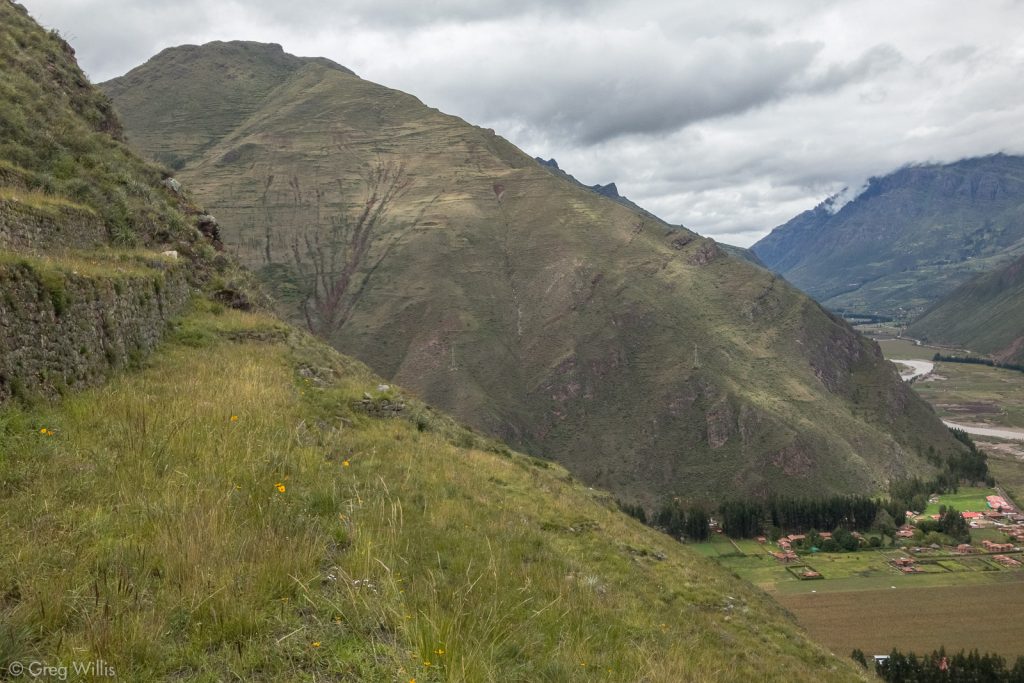
Looking East Sacred Valley from Paccha Pata Terraces, Pisac 
Paccha Pata Terraces, Pisac 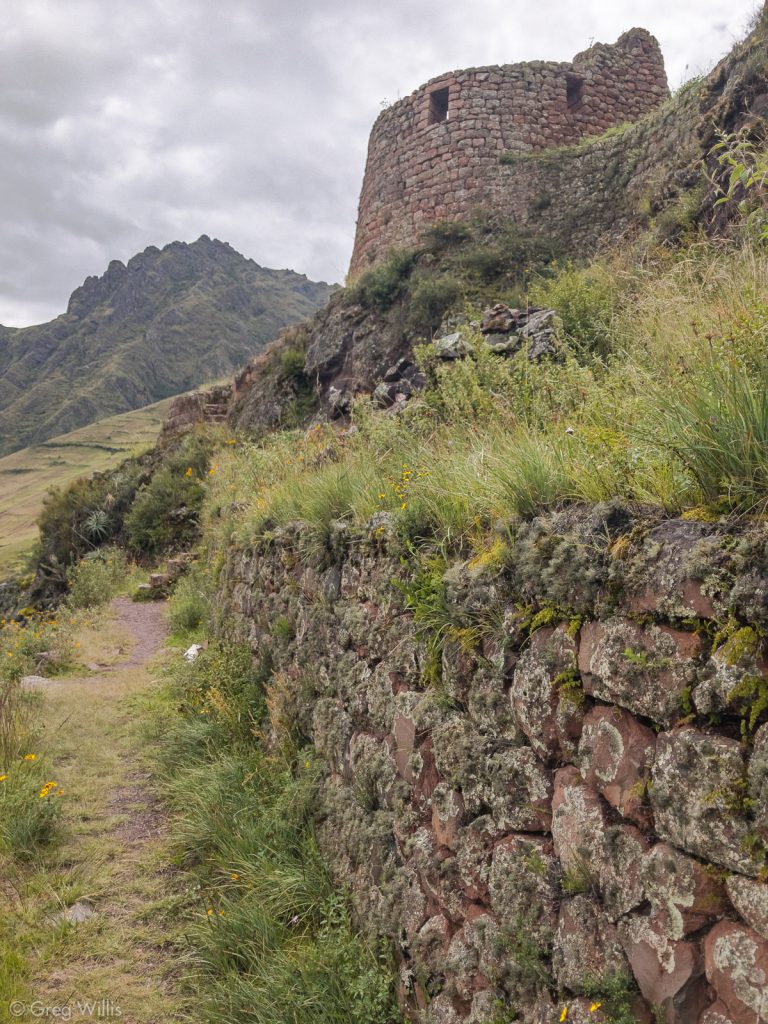
Tower in Paccha Pata Terraces, Pisac
Joking aside, the terraces are actually very impressive. I don’t know which is more amazing: the effort and skill of their construction or the orderliness and beauty of their design. And the trail up was kept in good shape, stairs mostly.
After a final push up a peak we came to the saddle on the ridge which holds the Main Temple.
Main Temple Section

As you might imagine, the walk up thinned the crowds from the hundreds of bus tourists at the top to just a handful of hardy hikers. And the rarified group of visitors added to the feeling of exclusivity that the temple section had in Inca times. Although the hike was arduous, the Temple section made it worthwhile.
And it’s here that one finds the elite construction: tight-fitting rectangular stonework, double-jamb doorways, water fountains, niches, carved rock outcrops and the Temple of the Sun.

Sacred Valley from the Main Temple Area 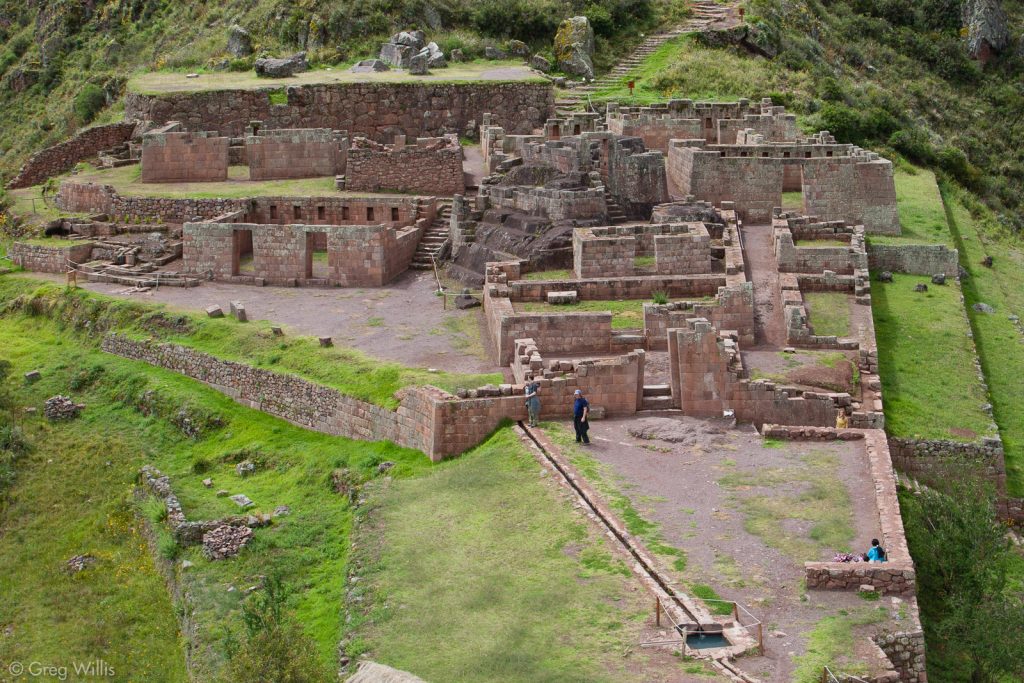
Main Temple Area Overview 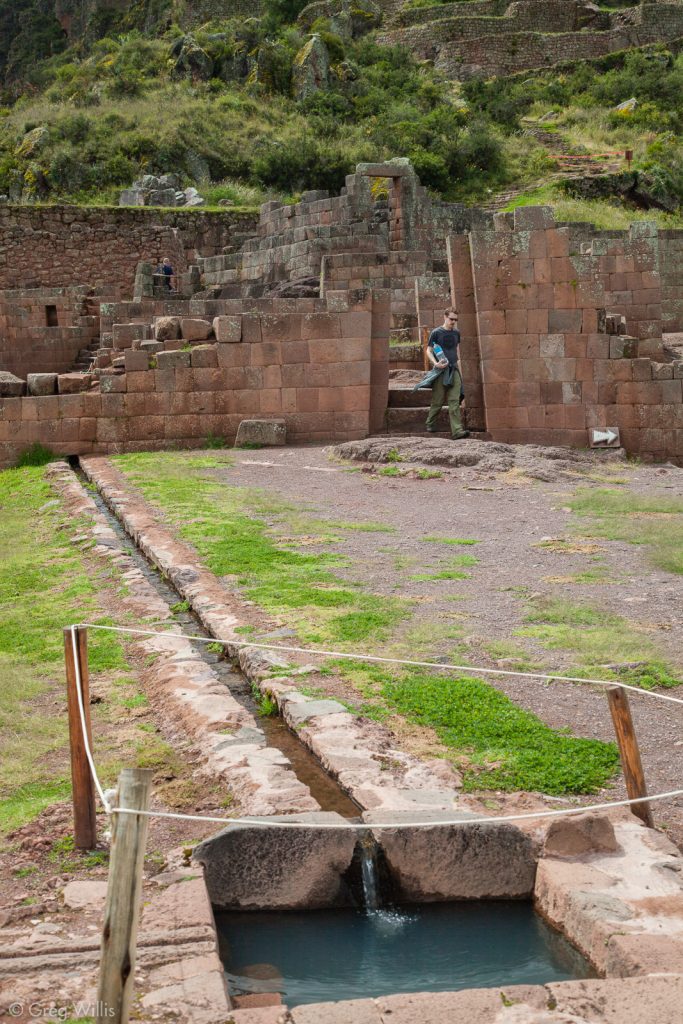
Main Temple Area, Entrance Doorway and Water Feature 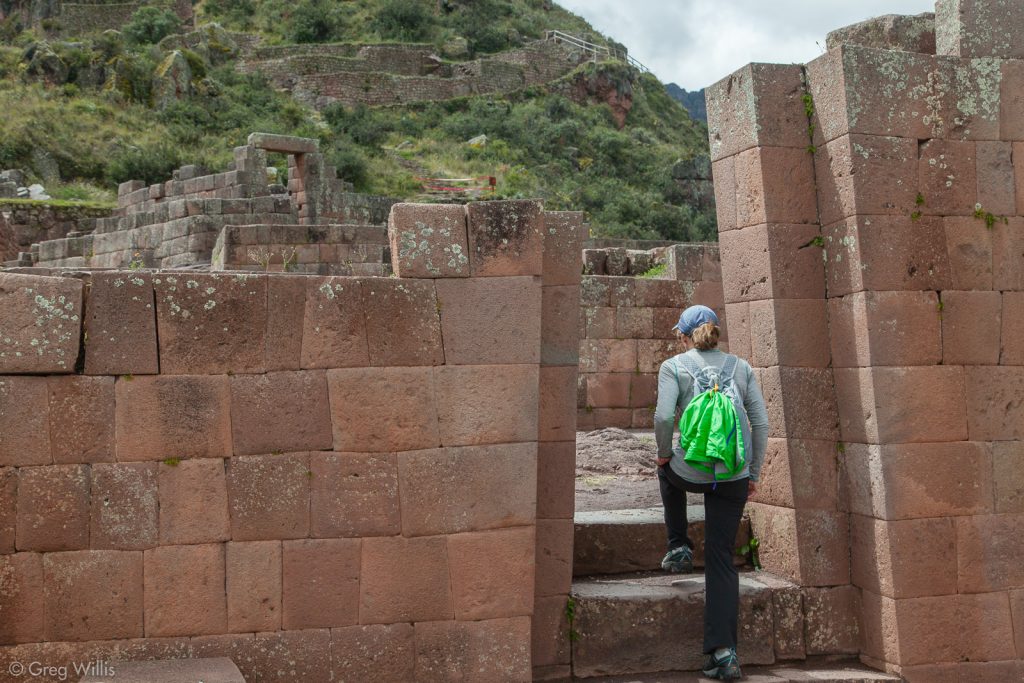
Main Temple Area, Entrance Doorway and Water Feature 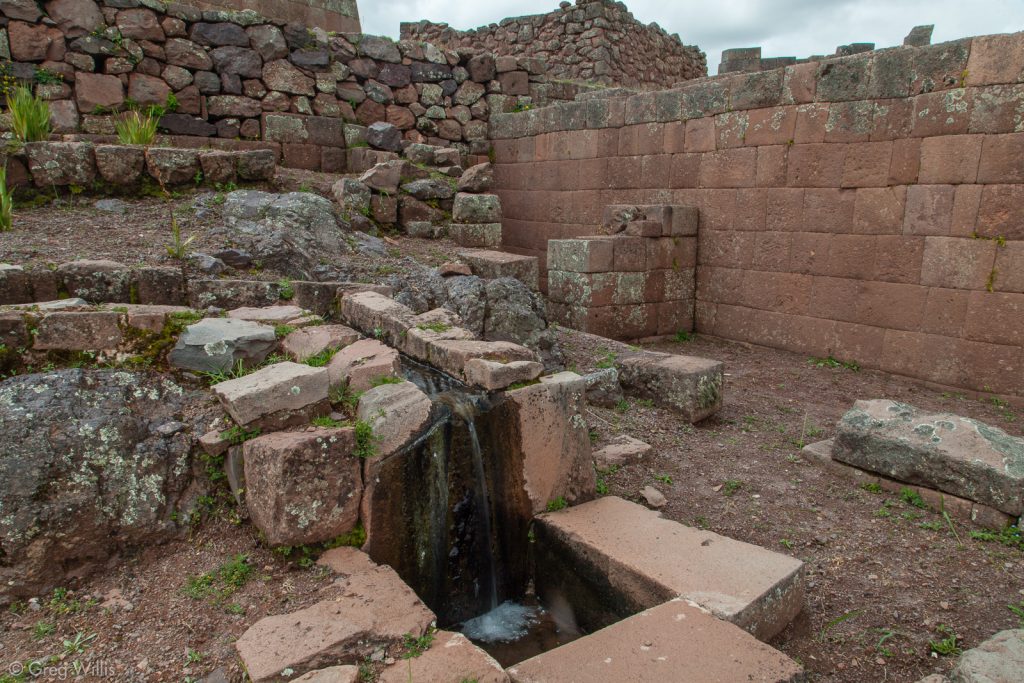
Main Temple Area Water Fountain 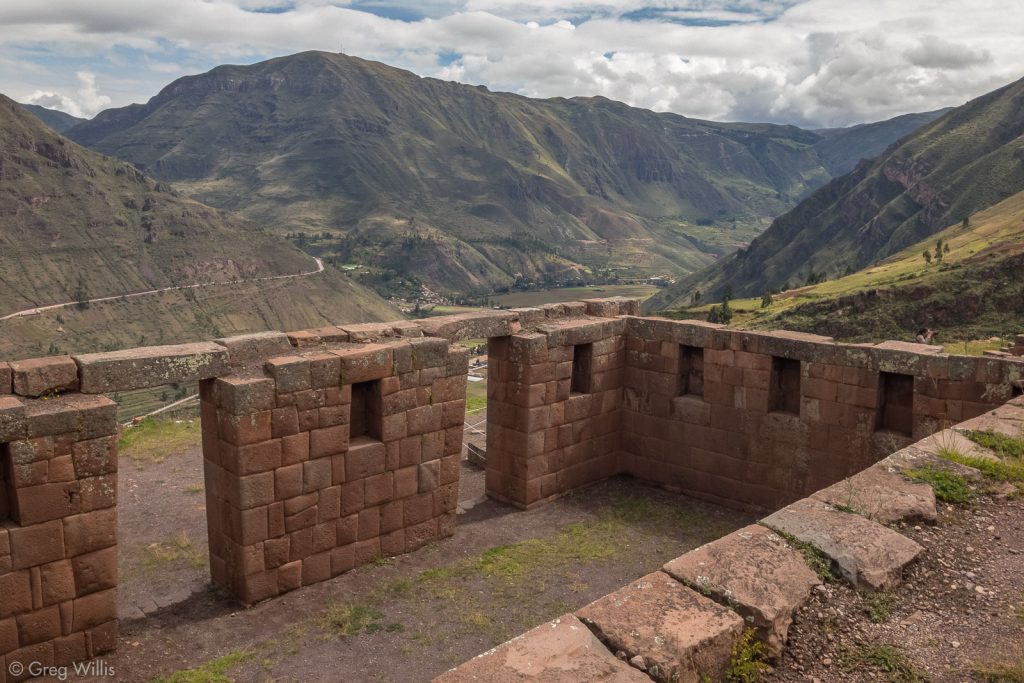
Main Temple Area, Chapel and the Sacred Valley 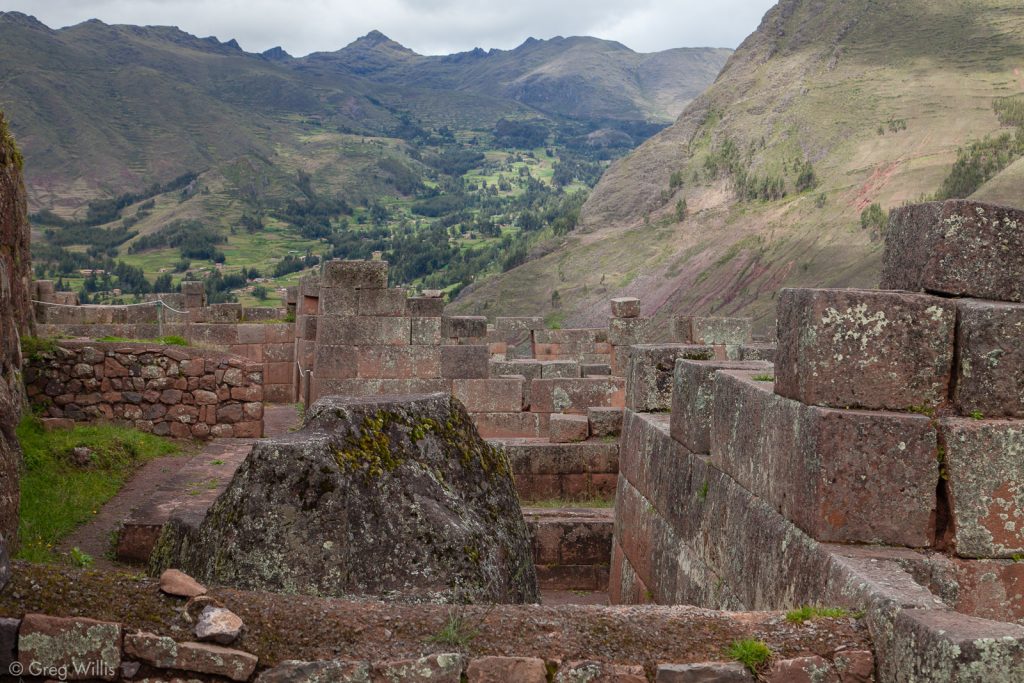
Pisac Main Temple Area, Temple of the Sun Masonry 
Main Temple Area, Temple of the Sun 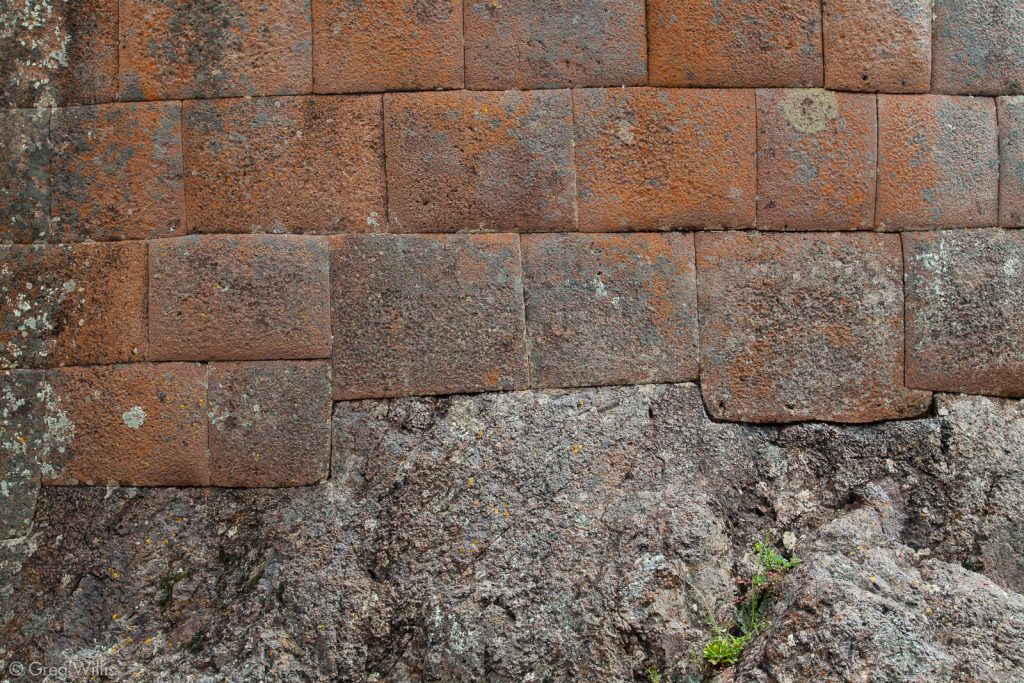
Pisac Main Temple section, Temple of the Sun Masonry
Like in the Qorichanca in Cusco or in Machu Picchu, you can tell the Temple of the Sun in Pisac by its ‘D’ shape — having both curved and straight walls. The Temple of the Sun incorporates an outcrop of the living rock, which the Inca carved to make platforms, niches, and to connect it with the walls.
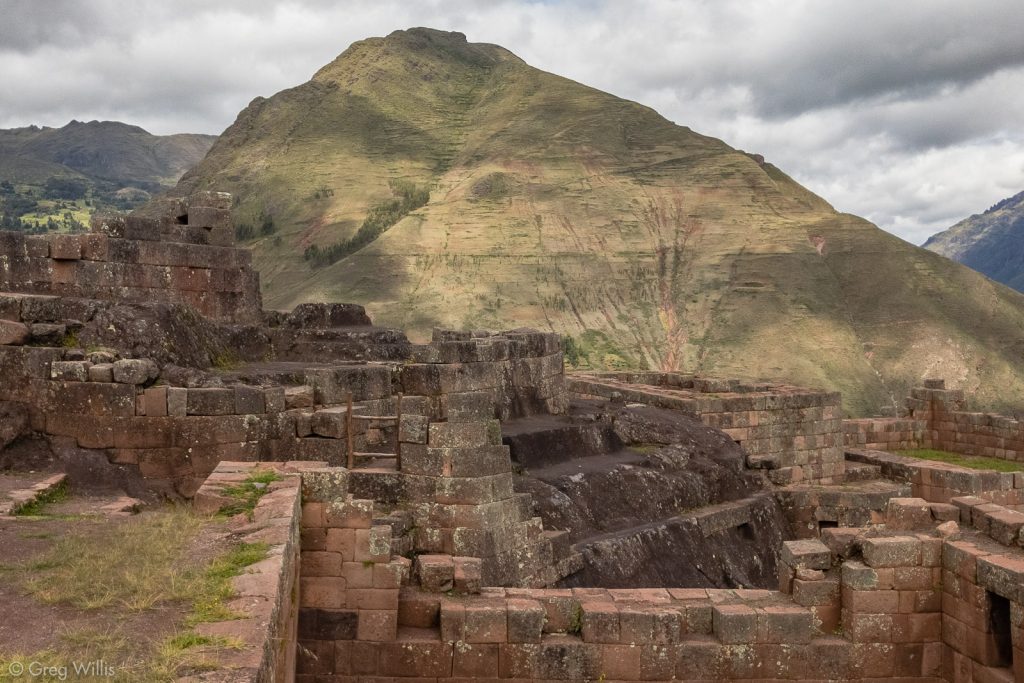
The Sacred Valley with the town of Pisac and the Urubamba River spreads out before the temples, almost surrealistically. There’s little question as to why the Inca built their temples here. The washed-out path prevented us from going any higher than the temples, so we did not see a couple of other sights.
Pisaqa
On the way down we passed through our final section, the Pisaqa. It was much like our first on of the tour, Qanchis Racay, mainly housing for the terrace farmers. From here we took a different path down, but eventually retraced our steps back down to the town.
The town of Pisac dates from pre-Hispanic times and indeed the original Inca street layout remains. And it’s certainly made for tourists. The easy proximity to Cusco means a steady stream of tourists, and this stream has scoured much of the charm away. And most of the market is geared to selling tourist souvenirs. Do not expect a sleepy Ollantaytambo or a rustic Chinchero. We had a late lunch then took a cab to our night’s lodging in Calca.
- Date: Tue 11 Apr 2017
- Elevation Gain/Loss: 1,300 ft
- Distance: Distance 3 mi
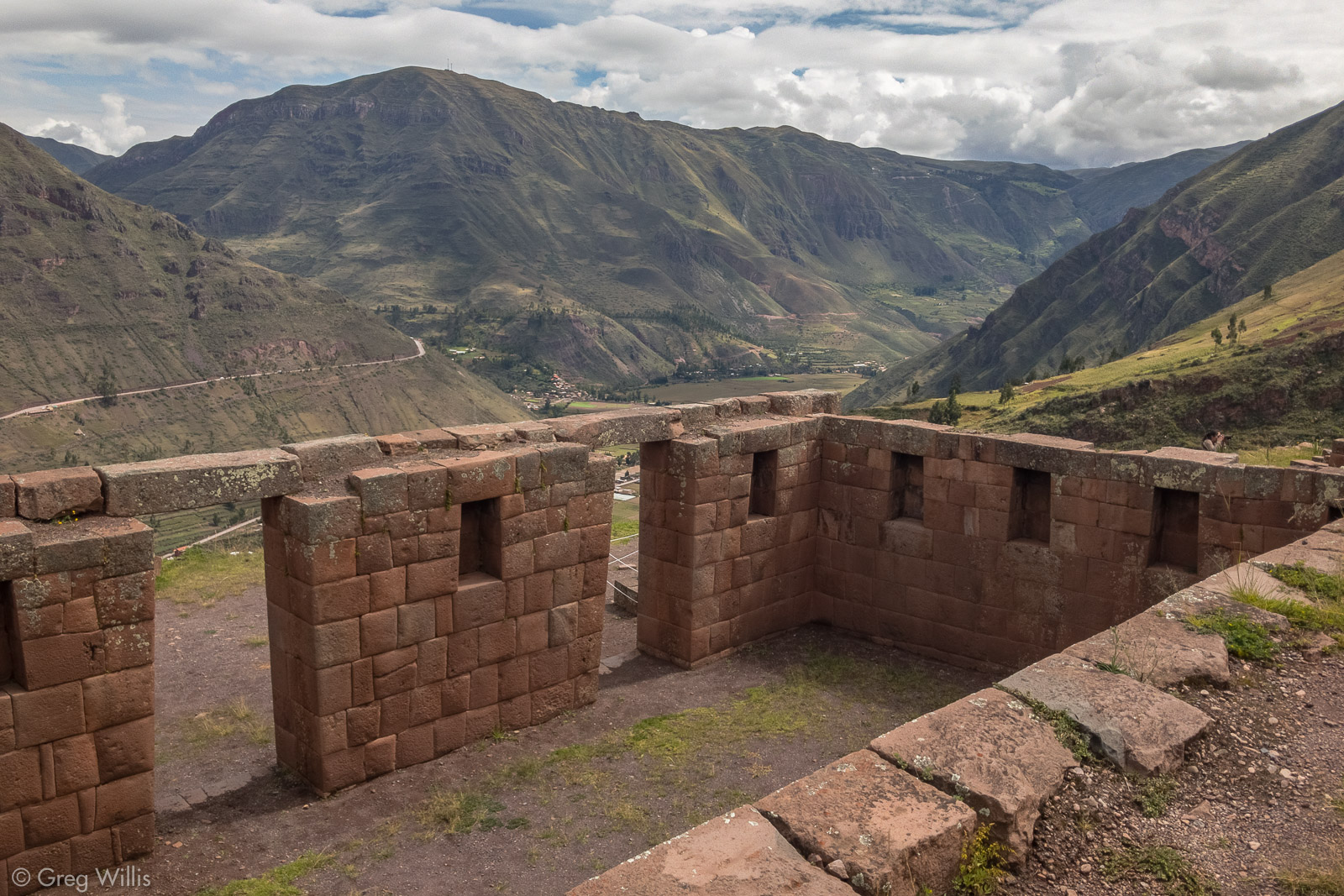

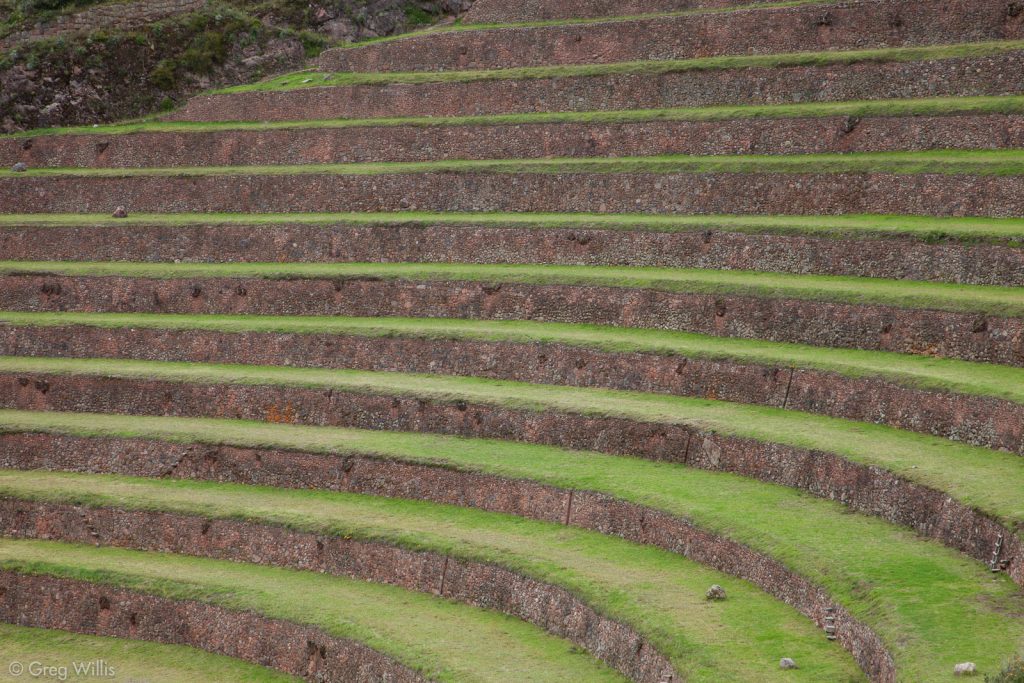
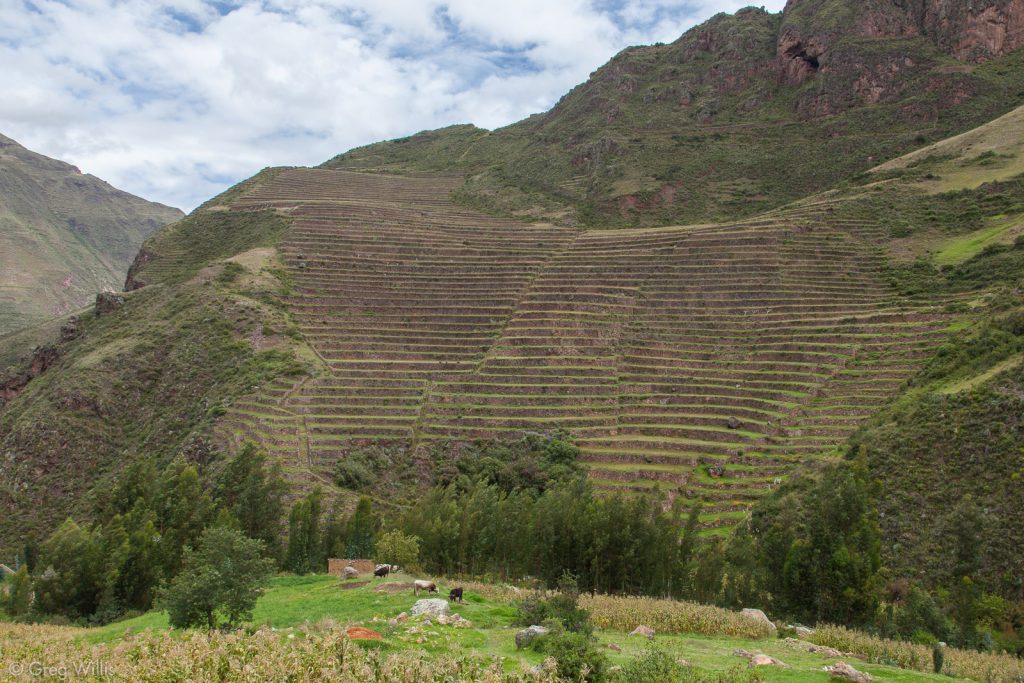

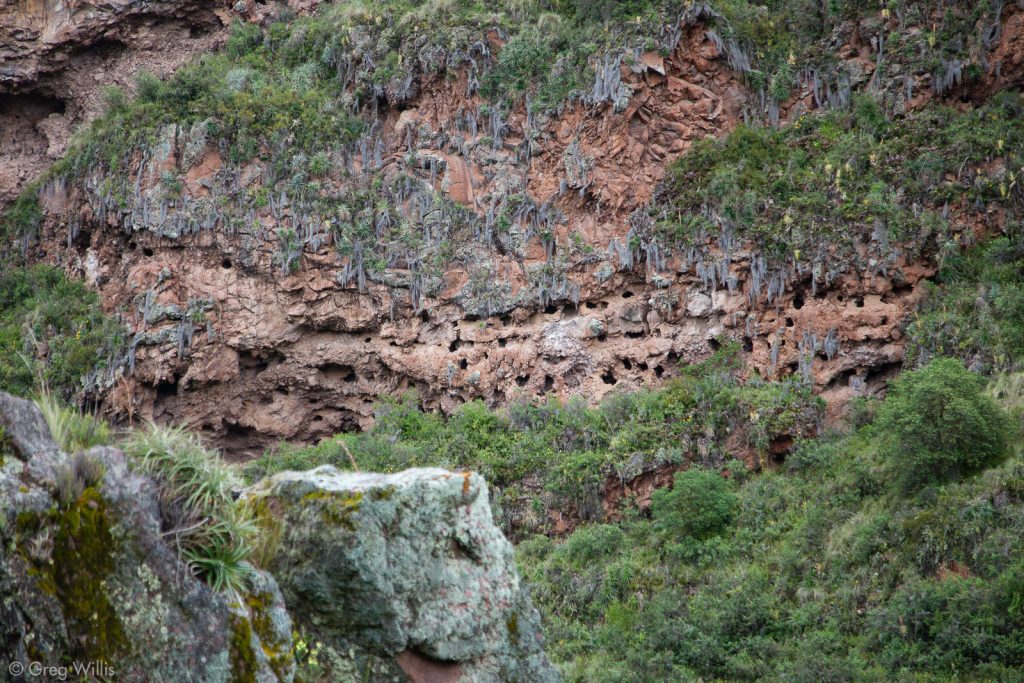
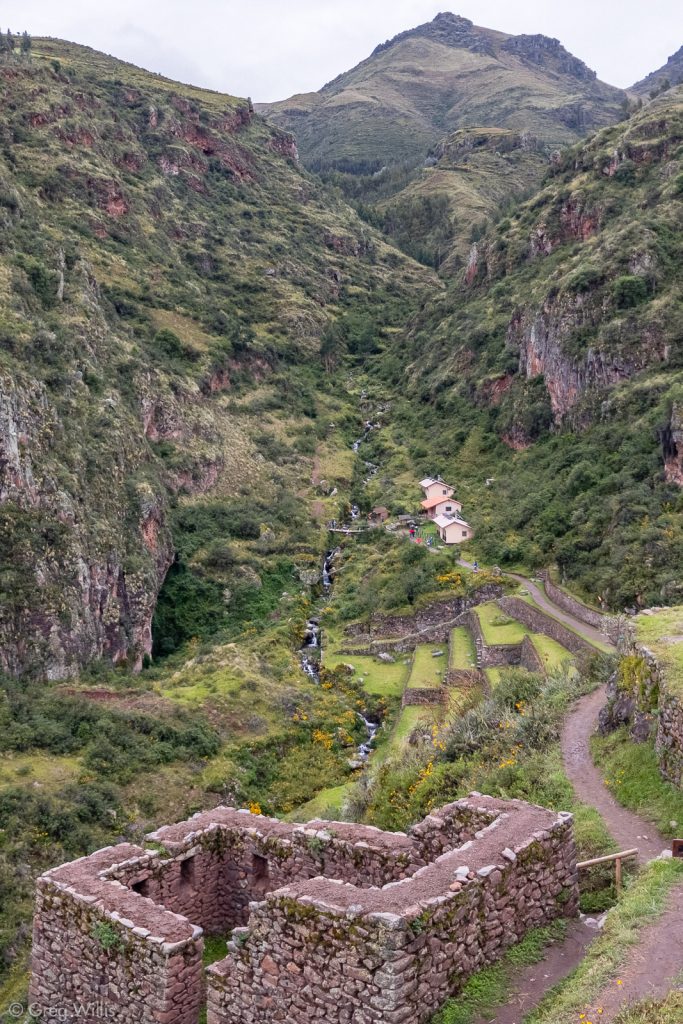

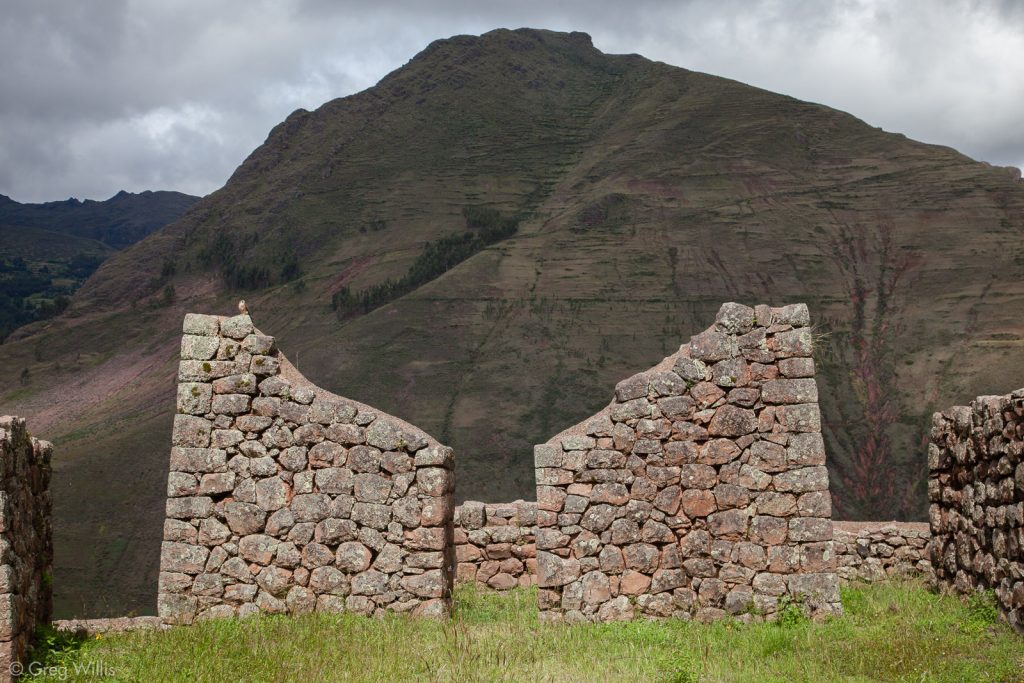
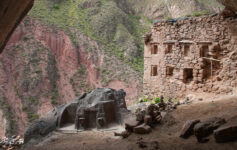
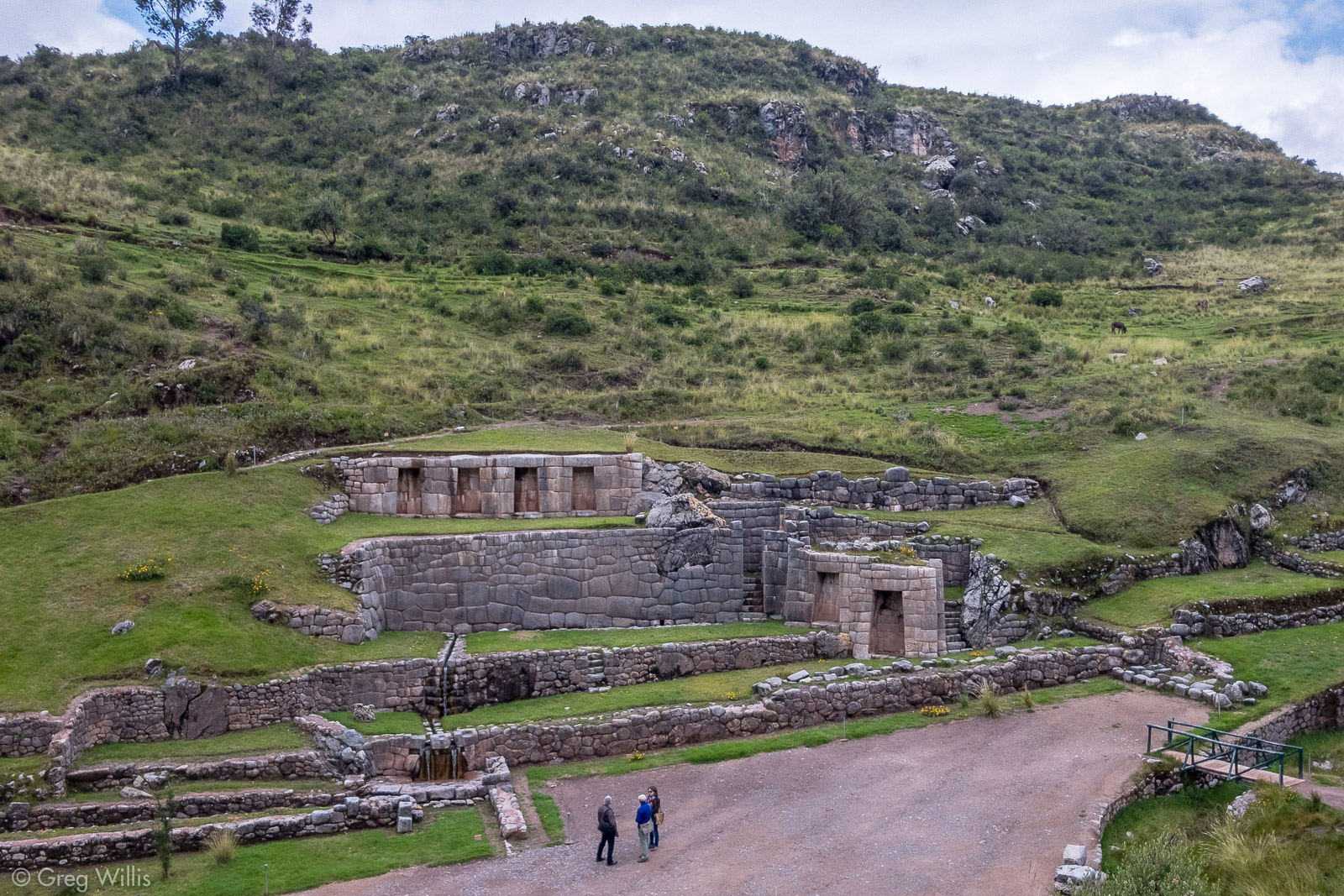
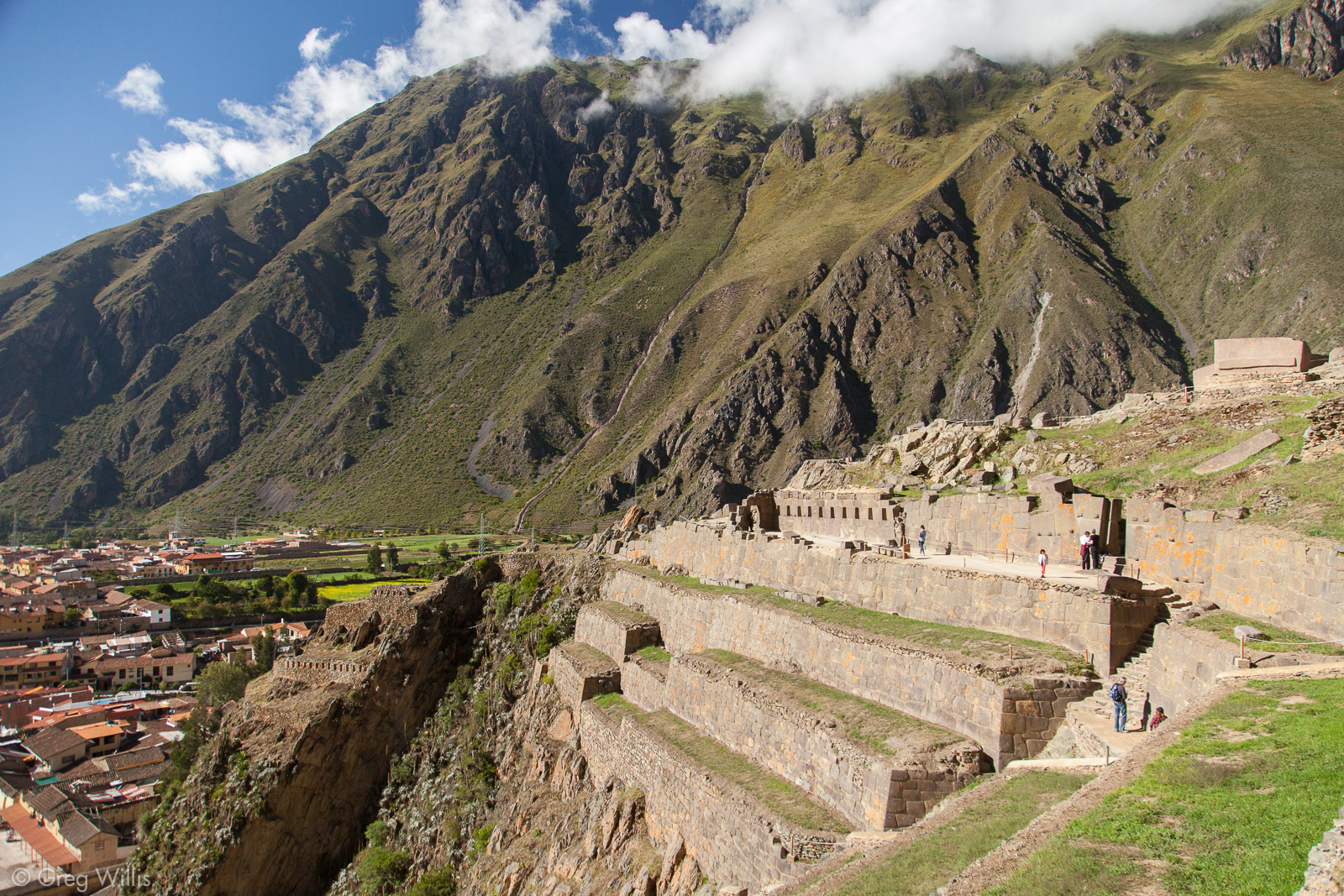

Leave a Reply